
|   |

|   |
'Life of Pi' serves delicious pie to Bay area rasikas - Poornima Ramaprasad e-mail: poornima@sbcglobal.net Photo credits: Raju Photography, Anubhava SJ November 16, 2018 "You must take life the way it comes and make the best of it." "Fear is life's true opponent and only fear can defeat life." Some of the inspirational quotes from Yann Martel's most celebrated adventurous and philosophical fantasy 'Life of Pi' are true life lessons that everyone should draw inspiration from. The book and the movie have made waves and have earned a plethora of awards. Last Sunday, San Francisco Bay area witnessed a Bharatanatyam adaptation of the novel that premiered at the De'Anza auditorium in Cupertino to a houseful of critical rasikas, lo and behold, they just hit it out of the park! The whole one and half hour presentation was seamless and gripping. The narrative begins with an introduction to Piscine Molitor Patel, the young protagonist, and his family. Piscine grows up in Pondicherry, where his father runs a zoo. Due to the government turmoil and declaration of emergency, distressed Pi's family decides to close the Pondicherry zoo and move to Canada. Pi's parents, brother and himself along with a few animals board the Japanese ship Tsimtsum, which sinks due to turbulent weather conditions and Pi is the only person in the family to be able to make it into a lifeboat and survive. Along with Pi, a hyena, a zebra, an orangutan and Richard Parker, the tiger, also get on the life boat. The animals fight for survival and finally Pi is left alone on the life boat with Richard Parker, an adult male Bengal tiger. There is no land in sight and the ocean is infested with sharks and whales. Against all odds, how Pi finally makes it to the shore and survives forms the adventurous plot of 'Life of Pi.' 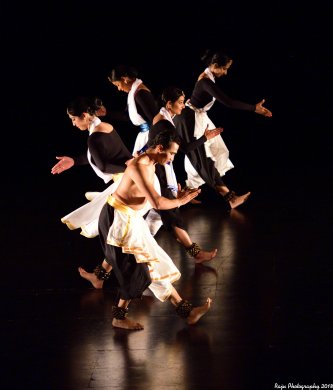 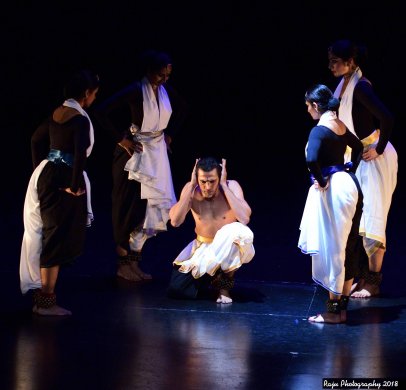 The concert started with an unusual rhythmic sollkattu glazed with a pleasant Aarabhi raga rendition on the violin when Piscine and the animals make a playful entry. This was followed by a lullaby by his mother which continues as a dramatic sanchari, performed to laya, showing his growing up years. The raga transitions to show the different phases was sure a hit. The portrayal of the zoo with the dancing of hyenas and other animals to a variety of sollkattu with mellifluous raga overlays showed the perfect harmony that existed in the life of young Piscine. As he grows up, Piscine, tired of being bullied and teased by his friends for his awkward name, declares his name as Pi - the number, and chants the infinite digits of Pi. This became a beautiful music and dance composition where a Paavani taana was overlaid by saying of the digits of Pi making it a calculated nritta rendition. The taana was accompanied by mridangam and violin to give a wholesome musical effect. By the end of this rendition, Piscine grows up into a teenager and goes by the name Pi. Pi was a mature and intelligent boy with interest in philosophy. He was raised a Hindu but happens to adopt Christianity and Islam and considers himself a devout follower of all the three religions. This was established in the presentation by Pi chanting the Rudra, doing the Azan and singing the gospel. Each of the religious hymns were recited in an authentic way and were overlaid with calculated jatis in multiple nadais. As it reached the climax, the audience was completely with Pi and would have joined him in following all the religions! When the religious heads come to know of this, a fierce religious battle ensues creating a turmoil. This was depicted by a craftily woven nritta/abhinaya item in Saveri. The second part of the story happens in the Pacific Ocean. The next item is the ship wreck which was portrayed by a short lyrical presentation in Thodi raaga, showing the helplessness and sadness of the situation, followed by a rhythmic dance to the chenda drums to show the fierceness of the sea finally resulting in the sinking of the ship. A long blue satin fabric used in impeccable formations to show the waves, the sinking ship and the moving life boat was eye catching. While the inmates of the ship were arrested by dark waters and stripped of their possessions in the cruel ocean, they see a life boat. Pi, along with zebra, hyena, orangutan and the tiger, makes it into the life boat. In the next item, the hyena devours the zebra and orangutan and the tiger kills the hyena. A well-paced rendition of swaras with complex kanakku in the mood appropriate Revathi raga with an aptly overlaid nattuvangam, along with grahabedha, reaching climax for each of the killings made this the best scene. This truly brought tears of joy for the art form while the same tears were those of despair and hopelessness of the situation. In the next item, Pi realizes the losses and the fact that he has ended up alone with the tiger on the boat in the vast ocean. A short abhinaya item in Vasanthi raga was just right to show his plight. 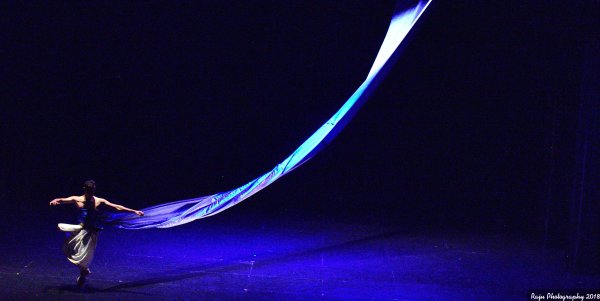
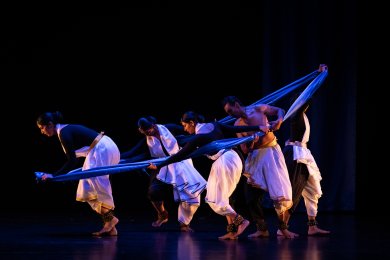 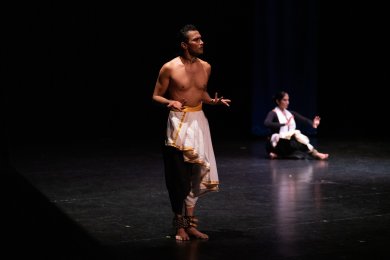 The next item was a series of lyrical verses describing the myriad of emotions Pi goes through. He describes how the ocean was enormous at day and claustrophobic at night. He finally resolves to his fate of loneliness, hot sun, raging waters, hungry tiger aboard and hungry sharks outside. Pi tames the tiger knowing the advantage he had over the tiger - that he could hunt fish and feed the tiger while the tiger could not survive without him. The use of ragas Suryakauns (or Surya) for his loneliness under hot sun and Chandrajyoti for the cold nights, Athaana for the monstrous sharks' act and Hamsanaada to train the tiger were very relevant for the abhinaya in the offing. A generous use of swaras, jathis, sollkattus as needed made this padam quite nritta heavy and jazzed up as a wonderful dance piece. In the next item, Pi spots a large ship and feels like Lord Vishnu has come down to help Manu. He shouts and tries in vain to make a contact. The journey continues and they come on an island which is full of greens and thousands of meerkats. However, soon they find that the island is not livable. Here again a padam in Kaapi to show Pi's anger at missing the ship and another in Behag to show the meerkats play and a somewhat eventful life in the island were very enjoyable. The lyrical number was intricately woven with rhythmic patterns. As the climax unfolds, Pi has to leave this island with the tiger. He continues his journey, reaches a shore of white sand and realizes that they are finally saved. As Pi rejoices, his partner Richard Parker unceremoniously walks away, without looking back, into the jungle. The disappointed Pi wonders if the tiger left him or he himself has left. A short rendition of Vasanthi raga here brought out the melancholic enactment perfectly. In the concluding part, Pi is rescued by officials who are in disbelief about his experiences and so he makes up a more plausible story, which brought a comic relief to the audience. Life of Pi is a first-person narration, an account of Pi's life on the sea with a tiger for 227 days. Ganesh Vasudeva as Pi, the title role, shook the audience and bonded with them intimately. In addition to being the main dancer, the stage act was his conception. He also did the choreography and nattuvangam for the recorded music. The narration (in English), in the words of Pi, was by Ganesh as well, which made connecting the dialogues with abhinaya seamless. Snigdha Venkataramani is one of my favorite local artists here in the Bay Area for her versatility. Being a dancer herself, she has composed exceptional music for this production keeping everything tightly wrapped. The ragas used were apt, the interspersed swaras, taana, jathis and the exchanges with violin were very engaging. Lyrics for the songs were composed in Tamil by Sandhiya Kalyanaraman. Srinath Bala on mridangam was a treat and gave perfect closure to the music and Sandhya Srinath on violin supported ably on all segments. Dancers Shreya Iyer, Aishwarya Venkat, Roopa Suresh and Nitya Narasimhan adeptly supported Ganesh as the zoo animals, school bullies, whales, meerkats and everything else that the story demanded. Special mention to Shreya Iyer who played Richard Parker, the tiger, with poise. Lighting was subtle and costumes were appropriate. Overall it was a phenomenal musical that can be given a 5-star rating. Wish this can be taken around the world to enchant dance rasikas far and wide. yastu sarvani bhutanyatmanyevanupasyati | sarvabhutesu catmanam tato na vijugupsate || One who sees all animate and inanimate nature in the Supreme, and also sees the Supreme in all of them becomes free of fear and does not ever need concealment. The mesmerized audience gave a standing ovation and walked out rhythmically to the haunting Tha dheem tha, tarikitathaka, Jham ta tha, tarikitathaka. Poornima Ramaprasad is an ardent lover of Indian classical music and dance forms. She reviews Indian dance and drama events in the San Francisco Bay Area from time to time |